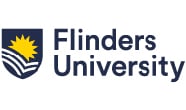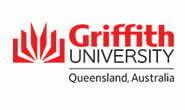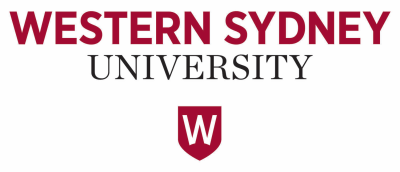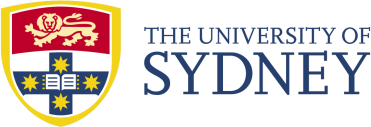Flinders University, Australia
Since 1966, Flinders has been a centre of inspiring achievement: from our pioneering research and excellence in teaching to the positive impact we have in the communities we serve. Inspiration leads to innovation. But innovation is more than just a buzzword at Flinders. It extends from our founding Vice-Chancellor Peter Karmel’s entreaty to ‘experiment and experiment bravely’ through to the creative, trailblazing work of our staff, students and alumni. As we enter an era of disruptive change and remarkable technological innovation, Flinders is well prepared for this unpredictable, exciting future.
Western Sydney University, Australia
Western Sydney University, formerly the University of Western Sydney, is an Australian multi-campus university in the Greater Western region of Sydney. It is a provider of undergraduate, postgraduate and higher research degrees with campuses in Bankstown, Blacktown, Campbelltown, Hawkesbury, Parramatta, and Penrith. It is currently ranked in the top 400 in the world in the 2014 QS World University Rankings and 19th in Australia in 2015. The university in its current form was founded in 1989 under the terms of the University of Western Sydney Act, 1988, which created a federated network university with an amalgamation between two trade schools – Nepean College of Advanced Education and Hawkesbury Agricultural College. The Macarthur Institute of Higher Education was incorporated into the university in 1989, and in 2001 the University of Western Sydney was restructured as a single multi-campus university rather than as a federation. In 2015, the university underwent a rebranding which resulted in a change in name from the University of Western Sydney to Western Sydney University.
University of Tasmania, Australia
Founded in 1890, the University of Tasmania is one of the oldest universities in Australia. It is highly regarded internationally as a teaching and research institution and, because it is the only university in the state of Tasmania, it offers a wide range of Bachelor, Masters and PhD programmes as well as English Language and Foundation Studies programmes. The University has a total student population of more than 16,000 students. It has two campuses, in Hobart and Launceston, as well as a study centre situated in Burnie, on the state’s north-west coast. The medical programme at the University of Tasmania has been consistently rated as the best of the six-year programmes in Australia in terms of student satisfaction and teaching quality (The Australian Good Universities Guide). It is a small medical School with a total intake of only 75 students each year, which includes approximately 18 international students. Students are treated as individuals, not as anonymous numbers in a large class, and they have plenty of opportunities to interact with teachers, including senior hospital staff.

Programme(s) Available
University of Newcastle, Australia
The University of Newcastle, established in 1965, is an exceptional achiever in research with an international reputation for expertise in innovative approaches to teaching and learning. With campuses in both the Central Coast and Hunter regions of NSW, the University serve a community of around a million people.
University of New South Wales, Australia
The University of New South Wales (UNSW) is one of Australia’s leading international research universities. UNSW provide a unique mix of disciplines, innovative multidisciplinary research programmes, and an outstanding learning experience to their students. UNSW commitment to continual quality improvement is expressed clearly in the UNSW Strategic Plan. UNSW demonstrate this commitment through a range of initiatives in their Faculties and Divisions, and through the strategic support and projects of the Division of the Pro-Vice-Chancellor (Education and Quality Improvement) and the Quality System Development Group.
Deakin University
Deakin University offers a personalised experience, enhanced by innovative digital engagement. Deakin leads by creating opportunities to live and work in a connected, evolving world. With over 40 years of experience as one of Australia’s leading tertiary education providers, Deakin has won numerous awards and teaches over 60,000 students each year. They offer their students world-class programmes and endless opportunities.
The University of Sydney, Australia
From its beginnings in 1850, the University of Sydney was created as an institution to suit the needs of New South Wales, not simply reflect England’s ancient universities. A founding principle was that academic merit alone regardless of religious beliefs or social upbringing would be the test for admission. We can make a strong claim to being the first university in the world to admit male students purely on the basis of academic merit. In the 1880s we were also among the first to admit women on the same basis as men. Our founders recognised the power of education to change society. We hold that belief just as strongly today.
University of Adelaide, Australia
Since its establishment in 1874 the University of Adelaide has been amongst Australia’s leading universities. Its contribution to the wealth and well-being of South Australia and Australia as a whole – across all fields of endeavour – has been enormous. Adelaide has a fine tradition of exemplary scholarship and ground-breaking research, and its unique relationship with industry and other organisations ensures that research expertise is translated into tangible benefits for the global community.
Adelaide’s research is at the leading edge of knowledge, with research earnings consistently the highest per capita of any university in Australia. Analysis of the impact of publications and citations shows that the University of Adelaide is ranked in the top 1% in the world in 11 research fields.
For Dentistry Transfer Student
- Students made ineligible if they have failed an end of semester examination in any year.
- Students made ineligible if they received less than ‘good’ results for motivation, class participation, academic ability, English proficiency, clinical skills, interactive skills on the Student Attribute Form.











